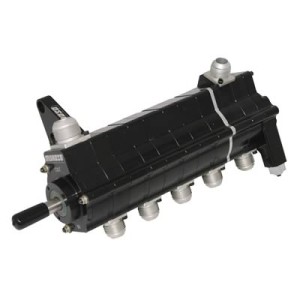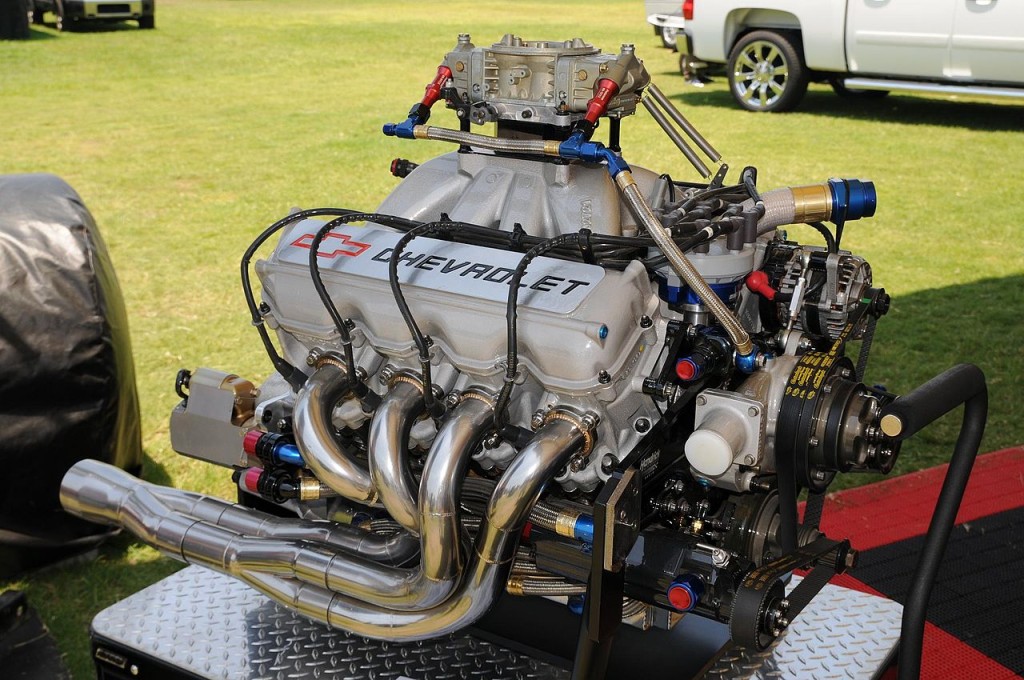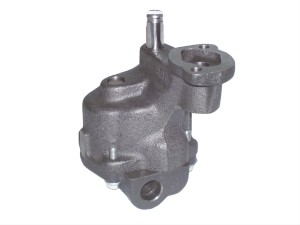
Drag Race 101:When to Choose Dry Sump Over Wet Sump Oiling
Proper lubrication of your engine is extremely important. Lubrication prevents your engine from becoming a pile of metal shavings in the pan or on the ground. It also helps to prevent your hot rod’s engine from becoming a puddle of molten metal. When building a drag engine or an engine for a street rod, most people I’ve spoken with assume that as long as they use high quality oil in the right viscosity with a good filter, they’ve figured everything out. Some may go so far as to take the extra steps of installing an external oil cooler and using a lubrication additive to help protect their engine.
However, this leaves off the crucial step of deciding between dry sump and wet sump oiling. We published an article not too long ago concerning oil pumps, in which we listed a number of different pumps for both wet and dry sump oiling, so we’re not going to go into much detail about the pumps here. I’m going to delve deeper into the differences between the two types of systems and list pros and cons of each. I’m also going to try and provide a little direction into when and why you’d go with one type of system over the other.
In a nutshell, wet sump oiling is the type of lubrication system that most people are familiar with. It has an internal oil pump that is usually driven by a gear on the camshaft; often co-located with the distributor drive gear. Unless an external oil cooler is used, except for the oil in the filter, the oil never leaves the engine. This type of system gets its name from the fact that there is always (hopefully) a decent quantity of oil in the “sump,” the bottom of the oil pan. Oftentimes the sump can be identified by the telltale bulge of the oil pan.
In this type of system, the oil is picked up by the pickup located in the “sump” of the oil pan at the bottom of the engine. The oil is fed through the oil pump where it is pressurized, fed through the filter, and then flows through the engine. Gravity then takes over and causes the oil to run down into and back into the sump. In one sentence, a wet sump oiling system is one where everything required is either contained inside the block, or, in the case of the filter, attached to it. The external oil cooler is not a requirement, except for racing engines.
The main advantages if wet sump oiling are cost and simplicity. You can purchase a good wet sump pump for about a hundred bucks. Install the pump. Drop the driveshaft down the opening in the block until it engages the pump, spin on the filter, attach the valve covers, add oil, prime, and drive. That’s basically all there is to getting a wet sump system up and running.
 What Is a Dry Sump Lubricating System?
What Is a Dry Sump Lubricating System?
A dry sump lubricating system is one where the pump is mounted to the outside of the engine and is driven by the accessory drive belts. An external cooler and filter are usually used. This type of system gets its name from the fact that the oil is scavenged out of the oil pan, the sump, and pumped into a holding container, from which is it pumped to the filter and then through the engine. Take a look at the main image for this article above. That is a NASCAR engine with the dry sump pump mounted below the header on the right side of the engine.
The dry sump oil pump is usually made up of four pumping stages. Three of these stages are normally used to keep the oil sump as dry as possible. The fourth stage of the pump is used to pump the oil through the engine.
Why Should I Use a Dry Sump System in My Drag Motor?
Oil sitting in the pan can slough around while you’re driving. When this excess weight of oil moves around like this, the crankshaft will usually have to rotate through it, causing friction. Our engines have to work harder to push the crank through this excess weight of oil, robbing us of power. This phenomenon of the oil waving around in the sump is known as windage and can be controlled to an extent by the installation of a windage tray (Explained below) in the pan.
However, at the speeds we see on the tracks, the windage tray is quite often not enough to overcome this shortfall of the old school wet sump oiling systems. This is why the dry sump system was invented. Since there is very little to no oil remaining in the pan, there’s nothing for the crank to have to be driven through, and thus no loss of power.
The dry sump lubrication system can also help your motor make more power in other ways. For instance, the vacuum created by the scavenging action of the dry sump pump helps improve engine power by creating a better ring seal, meaning more compression can be built. Another advantage is that you can control the engine temperature better because more a dry sump system has more oil capacity that a wet sump system.

More Reasons to Go with Dry Sump Oiling in Your Strip Burner Engine
Although the reasons listed above should steer you to dry sump oiling over wet sump for high performance engines, they aren’t the only ones. For example, output volume and pressure are usually adjustable. The addition of external oil coolers is also much easier because the dry sump system has piping and ducting on the outside of the engine that can be tapped into. Dry sump pumps also deliver pressure more regularly. Sure, you’ll see an increase on the gauge as the RPM increases, but it’s not going to be a 30-40 PSI jump like with an internal pump.
A very important advantage of a dry sump system is that because the oil pan is kept fairly dry, it can be shorter. This allows you to install the engine lower, lowering the center of gravity. To be honest, this is more of an advantage to circle track and road coarse drivers, but it can also be an advantage to drag racers. Lastly, you can order these systems in complete kits, ensuring that everything works together flawlessly.
Reasons to Stick with Wet Sump Oiling
Dry sump oiling is for those with deep pockets. Take a look at this page at Summit Racing. Look at the first product listed, the Moroso dry sump pump and notice the price. You’re going to pay in the ballpark of about a thousand bucks, just for the pump. That doesn’t include the installation kit, oil cooler, reservoir, or pump drive kits. Now take a look at the product description page for the first Moros pump and look at everything that is not included with the pump. Yes, you have to buy all of that. 
As a straight line drag racer, you’re not likely to experience much in the way of oil windage. This decreases the advantages of a dry sump system. However, if your car’s engine has enough power to cause it to lift the front wheels upon launch, you will experience major amounts of windage that can cause damage to the engine and the frame and suspension when the windage causes the engine to drag and slam the front end back onto the track. Trust me, “it ain’t pretty when that happens.”
That said, every NHRA and IHRA team uses dry sump oiling systems because they’re more reliable. Then again, they have almost bottomless pockets, whereas most of us have a small budget. The choice is yours. Personally, when I’m building an engine solely for straight line work, I go with a high volume, high pressure wet pump like the one pictured above. But when I’m building an engine for an SCCA, IMSA, GTP, or NASCAR car, I go with dry sump.




Lots of us would love to get the advantages of a dry sump, BUT as shown the cost difference is just too great and far above the financial reach of many.